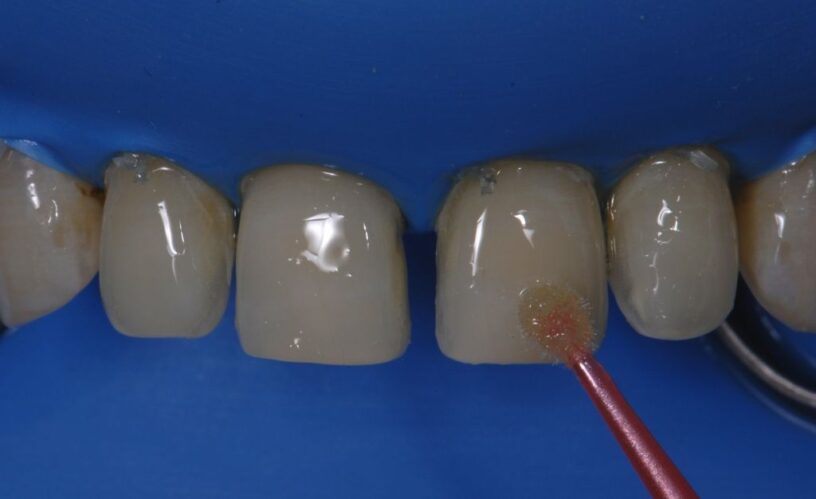Dental Bonding Agent Market size was valued at USD 14.7 billion in 2021 and is expected to witness a CAGR of 7.9% in the forecast period from 2022 to 2030
The Dental Bonding Agent Market is focused on materials used in restorative dentistry to bond composite resins, veneers, crowns, and other dental materials to tooth structures. These agents play a critical role in dental procedures by providing strong adhesion, enhancing the durability of dental restorations, and improving patient outcomes. Dental bonding agents are essential in both cosmetic and restorative dentistry.
Market Overview:
Dental bonding agents are widely used in procedures such as fillings, veneers, and crowns to ensure the dental materials adhere properly to the tooth surface. These agents help improve the structural integrity of dental restorations, increase their longevity, and enhance aesthetic outcomes. As dental treatments grow in popularity due to increased awareness of oral health and aesthetics, the demand for effective bonding agents is rising.
Key Market Drivers:
- Growing Demand for Cosmetic Dentistry:
- Aesthetic Appeal: Increasing awareness of dental aesthetics, including smile makeovers and tooth whitening, is driving the demand for cosmetic dental procedures that require bonding agents.
- Celebrity Influence and Social Media: The desire for an improved smile, fueled by social media and celebrity endorsements, is contributing to the growth of cosmetic dentistry, thereby increasing the use of bonding agents.
- Rising Incidence of Dental Disorders:
- Tooth Decay and Cavities: The growing prevalence of dental caries (tooth decay) and other dental issues, particularly among aging populations, is driving the need for restorative dental treatments, which rely heavily on bonding agents.
- Aging Population: As the global population ages, the demand for restorative dental procedures, including the use of bonding agents, increases, especially for dental repairs and replacements.
- Advancements in Dental Materials:
- Improved Bonding Technologies: Continuous innovations in bonding agent formulations, including universal bonding agents that offer compatibility with a wide range of dental materials and simplify the application process, are driving market growth.
- Nanotechnology: The development of nanotechnology-based bonding agents enhances adhesion properties, minimizes micro-leakage, and improves the longevity of dental restorations.
- Increasing Access to Dental Care in Emerging Markets:
- Expansion of Dental Clinics: The growing number of dental clinics and professionals, particularly in emerging economies, is increasing access to dental care and driving demand for bonding agents.
- Government Initiatives: Initiatives to improve oral health, such as public health campaigns and subsidized dental care in developing regions, are boosting the adoption of dental bonding materials.
Trends:
- Shift Toward Universal Bonding Agents:
- Simplified Application: Universal bonding agents are becoming more popular due to their versatility and simplified application process, making them suitable for a range of dental procedures.
- Reduced Chair Time: These agents help reduce the time required for dental procedures, which is beneficial for both dentists and patients, contributing to their increasing adoption.
- Focus on Minimizing Post-Operative Sensitivity:
- Advanced Formulations: New bonding agent formulations are focusing on minimizing post-operative sensitivity, a common issue in dental procedures, to enhance patient comfort and satisfaction.
- Improved Bond Strength: Enhancements in the adhesive properties of bonding agents are leading to stronger and more durable dental restorations, with fewer chances of failure.
- Adoption of Nanotechnology-Based Bonding Agents:
- Increased Adhesion: Nanotechnology is improving the performance of bonding agents by increasing their adhesion to both tooth enamel and dentin, offering better outcomes for dental restorations.
- Longevity: Nanoparticle-enhanced bonding agents are proving to be more resistant to wear and degradation, extending the lifespan of dental restorations.
- Growing Demand for Aesthetic Restorations:
- Natural-Looking Results: There is an increasing demand for dental bonding agents that enhance the aesthetic appearance of restorations, providing more natural-looking and durable results.
- Increased Use of Composite Resins: Composite resin materials are widely used in conjunction with bonding agents for aesthetic dental restorations, driving market demand.
Challenges:
- High Cost of Advanced Bonding Agents:
- Price Sensitivity: Advanced dental bonding agents, especially those with nanotechnology, can be expensive, making them less accessible to patients in certain regions or for lower-cost procedures.
- Limited Access in Developing Regions: In emerging markets, limited access to advanced dental materials and bonding agents may slow market growth.
- Technical Complexity:
- Technique Sensitivity: Dental bonding procedures require a high level of technical skill to achieve successful outcomes, and improper technique can lead to restoration failure.
- Operator Variability: Variations in how dentists apply bonding agents can lead to inconsistent results, making training and experience important factors in product success.
- Regulatory Hurdles:
- Strict Regulatory Requirements: Dental bonding agents must meet stringent regulatory requirements for safety and efficacy before entering the market, which can delay product launches and increase development costs.
- Compliance: Manufacturers must comply with regional regulations, such as FDA approvals in the U.S. and CE marking in Europe, which can complicate market entry for new players.
Future Outlook:
The Dental Bonding Agent Market is expected to continue growing as cosmetic and restorative dentistry gain popularity worldwide. Innovations in bonding technologies, such as universal bonding agents and nanotechnology-based products, will likely dominate the market in the coming years. As access to dental care improves in emerging markets, the demand for dental bonding agents will increase, particularly for aesthetic and restorative procedures.
The shift toward minimally invasive and aesthetic-focused dental treatments will further drive the adoption of advanced bonding agents, ensuring that the market remains dynamic and growth-oriented. Additionally, as research in dental materials advances, new products offering improved adhesion, reduced sensitivity, and longer-lasting results will continue to shape the future of the dental bonding agent market.
Click Here, To Get Free Sample Report https://stringentdatalytics.com/sample-request/dental-bonding-agent-market/15332/
Market Segmentations:
Global Dental Bonding Agent Market: By Company
Dentsply
Sirona Dental Systems
Smith & Nephew
Danaher
3M
BISCO Dental Products
Shofu Dental
Pentron Clinical
DMG America
GC America
Global Dental Bonding Agent Market: By Type
Self-etch
Total-etch
Global Dental Bonding Agent Market: By Application
Hospitals
Dental Clinics
Ambulatory Surgical Centers
Others
Global Dental Bonding Agent Market: Regional Analysis
The regional analysis of the global Dental Bonding Agent market provides insights into the market’s performance across different regions of the world. The analysis is based on recent and future trends and includes market forecast for the prediction period. The countries covered in the regional analysis of the Dental Bonding Agent market report are as follows:
North America: The North America region includes the U.S., Canada, and Mexico. The U.S. is the largest market for Cold-chain Pharma in this region, followed by Canada and Mexico. The market growth in this region is primarily driven by the presence of key market players and the increasing demand for the product.
Europe: The Europe region includes Germany, France, U.K., Russia, Italy, Spain, Turkey, Netherlands, Switzerland, Belgium, and Rest of Europe. Germany is the largest market for Cold-chain Pharma in this region, followed by the U.K. and France. The market growth in this region is driven by the increasing demand for the product in the automotive and aerospace sectors.
Asia-Pacific: The Asia-Pacific region includes Singapore, Malaysia, Australia, Thailand, Indonesia, Philippines, China, Japan, India, South Korea, and Rest of Asia-Pacific. China is the largest market for Cold-chain Pharma in this region, followed by Japan and India. The market growth in this region is driven by the increasing adoption of the product in various end-use industries, such as automotive, aerospace, and construction.
Middle East and Africa: The Middle East and Africa region includes Saudi Arabia, U.A.E, South Africa, Egypt, Israel, and Rest of Middle East and Africa. The market growth in this region is driven by the increasing demand for the product in the aerospace and defense sectors.
South America: The South America region includes Argentina, Brazil, and Rest of South America. Brazil is the largest market for Cold-chain Pharma in this region, followed by Argentina. The market growth in this region is primarily driven by the increasing demand for the product in the automotive sector.
Click Here, To Buy Premium Report https://stringentdatalytics.com/purchase/dental-bonding-agent-market/15332/?license=single
Reasons to Purchase this Report
- Market segmentation based on qualitative and quantitative analysis, taking into account both economic and non-economic aspects.
- Data on market value (in US dollars) for each section and sub-segment
- Identifies the area and market segment anticipated to experience the quickest growth and hold the majority of the market.
- Analysis by geography showcasing product/service usage in the region and highlighting the market dynamics affecting each region.
- A competitive landscape that takes into account recent service/product launches, collaborations, company expansions, and acquisitions by the companies profiled, as well as the market share of the leading players.
- Comprehensive company profiles for the top players in the industry, including business overviews, corporate insights, product benchmarking, and SWOT analyses
- The industry’s future market forecast in light of recent changes, including growth possibilities, drivers of growth, and obstacles present in both developing and emerging economies.
- Comprises a thorough examination of the market from a number of angles using Porter’s Five Forces analysis.
- Offers market knowledge across the Value Chain
- The current market dynamics scenario and future market expansion prospects
- Post-sales analyst assistance for six months
About Stringent Datalytics
Stringent Datalytics offers both custom and syndicated market research reports. Custom market research reports are tailored to a specific client’s needs and requirements. These reports provide unique insights into a particular industry or market segment and can help businesses make informed decisions about their strategies and operations.
Syndicated market research reports, on the other hand, are pre-existing reports that are available for purchase by multiple clients. These reports are often produced on a regular basis, such as annually or quarterly, and cover a broad range of industries and market segments. Syndicated reports provide clients with insights into industry trends, market sizes, and competitive landscapes. By offering both custom and syndicated reports, Stringent Datalytics can provide clients with a range of market research solutions that can be customized to their specific needs.
Contact Us
Stringent Datalytics
Contact No- +1 346 666 6655
Email Id- sales@stringentdatalytics.com




Leave a Reply